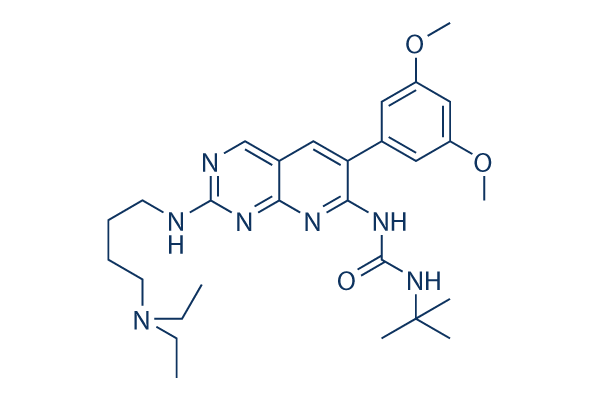As shown in Figure 4A, PTEN protein expression was sub stantially downregulated by distinct siRNA therapy of the two C8161 CON and C8161 ODAM cells and this corresponded with increased AKT phosphorylation in the two cultures. When PTEN siRNA therapy decreased PTEN protein amounts to a lesser degree in A375 ODAM cells, AKT phosphorylation was elevated To test no matter if suppression of AKT activation along with the elevation of PTEN expression is particular to ODAM expressing melanoma cells or could possibly be observed in other cell styles, we examined AKT phosphorylation and PTEN expression in MDA MB 231 breast cancer cells wherever we’ve got also observed prominent anti tumor results on ODAM transfection Lysates of manage and ODAM expressing MDA MB 231 cells have been probed for phospho AKT and PTEN expression and, as using the melanoma cell lines, MDA MB 231 ODAM cells exhibited decreased AKT phosphorylation for the activating S473 and T308 residues and, correspondingly, 3 fold enhanced ex pression of PTEN protein To additional investigate the part of PTEN in AKT sup energetic PDK1 and PI3K indicated no alterations inside their activation state related with ODAM expression Appreciably, ranges of PTEN protein have been elevated in A375 ODAM cells relative to controls, and similarly in C8161 ODAM cells.
Accord ingly, measurements of PTEN mRNA by quantitative authentic time RT PCR indicated the PTEN message was greater in A375 ODAM and C8161 ODAM cells more than individuals in vector handle cells Meta bolic labeling analyselleck inhibitor sis confirmed the enhanced fee of syn thesis of PTEN protein in A375 ODAM cells In contrast to altered AKT activation, probing of blots with phospho ERK 1 TAK-960 and 2 antibodies for lively MAPK indicated that amounts of phosphorylated ERKs had been no unique in control and rODAM expressing melanoma cells suggesting that signaling via this pathway is simply not immediately altered by ODAM expression below these culture situations Considering that PTEN is identified to inhibit AKT activation we wished to establish regardless of whether the elevated PTEN ranges evi dent in ODAM expressing melanoma cells are accountable pression by ODAM we utilized BT 549 breast cancer cells which are phenotypically much like MDA MB 231 cells but will not express functional PTEN Notably, BT 549 cells didn’t exhibit growth suppression in re sponse to secure ODAM expression although Western blot examination indicated that phospho AKT amounts can also be unaffected by ODAM expression in these cells lending credence towards the association of AKT suppression with enhanced PTEN along with the observed growth inhibition in cells expressing ODAM.
ODAM transfected BT 549 cells do, on the other hand, demonstrate improved ad hesion on Matrigel  coated plates indicating that ODAM expression in these cultures is practical in this respect and, additional, that ODAM results on cellular adhesion are to some degree independent of regulation as a result of PTEN Discussion ODAM protein expression has been demonstrated in the wide variety of regular odontogenic, glandular, and epi thelial renewal tissues too as in malignancies together with odontogenic tumors, gastric cancer, breast cancer, lung cancer, and melanoma Prior retro spective research of breast cancer patient biopsies indi cated a rise in ODAM expression localized towards the cell nucleus linked with advancing disorder stage, yet this expression corresponded with enhanced survival for patients at each stage A recent research of melanoma patient specimens indicated that nuclear ODAM expression correlates with sentinel lymph node metasta sis in above 70% of situations, indicative of higher stage mel anoma at diagnosis and poor prognosis requiring much more aggressive therapeutic intervention These scientific studies have left the function of ODAM in malignancy unclear seeing that, in both breast cancer and melanoma, nuclear ODAM localization corresponds with advancing sickness stage nonetheless its influence on illness out e seemingly differs.
coated plates indicating that ODAM expression in these cultures is practical in this respect and, additional, that ODAM results on cellular adhesion are to some degree independent of regulation as a result of PTEN Discussion ODAM protein expression has been demonstrated in the wide variety of regular odontogenic, glandular, and epi thelial renewal tissues too as in malignancies together with odontogenic tumors, gastric cancer, breast cancer, lung cancer, and melanoma Prior retro spective research of breast cancer patient biopsies indi cated a rise in ODAM expression localized towards the cell nucleus linked with advancing disorder stage, yet this expression corresponded with enhanced survival for patients at each stage A recent research of melanoma patient specimens indicated that nuclear ODAM expression correlates with sentinel lymph node metasta sis in above 70% of situations, indicative of higher stage mel anoma at diagnosis and poor prognosis requiring much more aggressive therapeutic intervention These scientific studies have left the function of ODAM in malignancy unclear seeing that, in both breast cancer and melanoma, nuclear ODAM localization corresponds with advancing sickness stage nonetheless its influence on illness out e seemingly differs.
